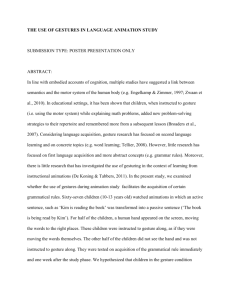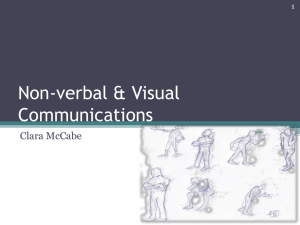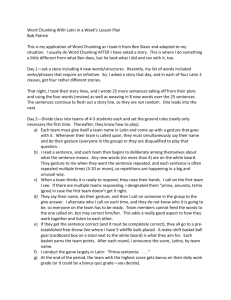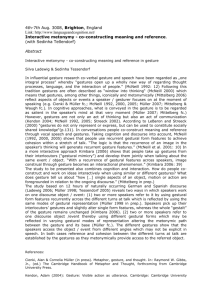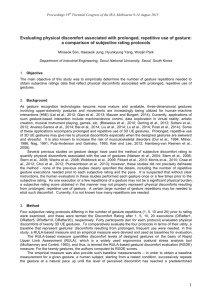Integration of multiple channels in language comprehension
advertisement
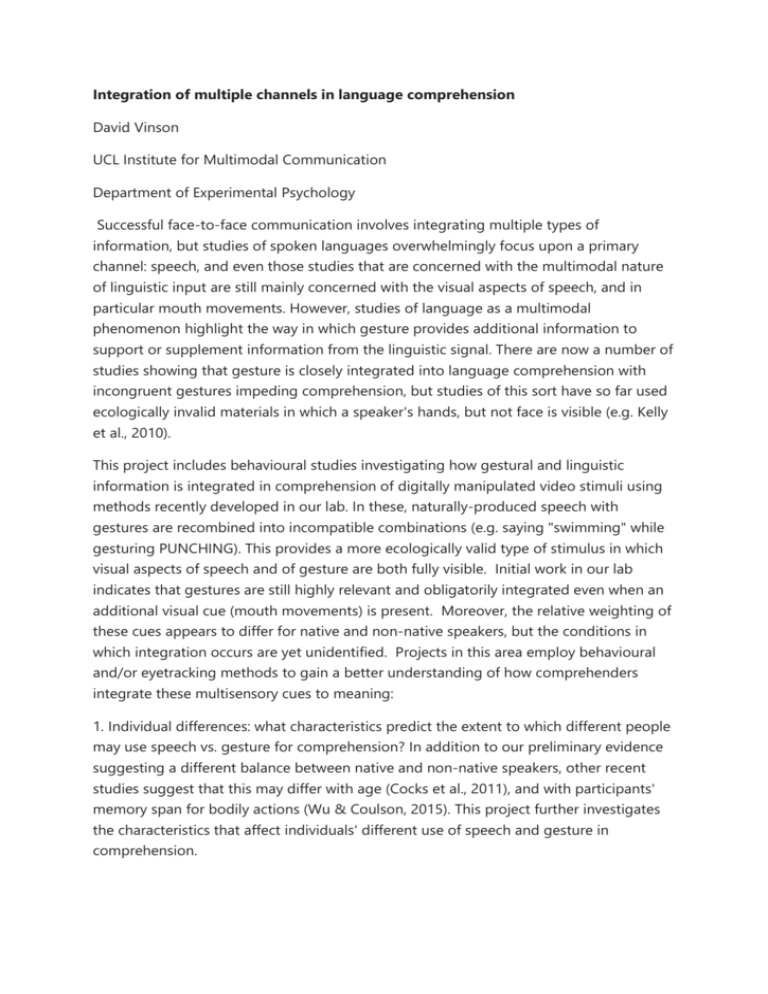
Integration of multiple channels in language comprehension David Vinson UCL Institute for Multimodal Communication Department of Experimental Psychology Successful face-to-face communication involves integrating multiple types of information, but studies of spoken languages overwhelmingly focus upon a primary channel: speech, and even those studies that are concerned with the multimodal nature of linguistic input are still mainly concerned with the visual aspects of speech, and in particular mouth movements. However, studies of language as a multimodal phenomenon highlight the way in which gesture provides additional information to support or supplement information from the linguistic signal. There are now a number of studies showing that gesture is closely integrated into language comprehension with incongruent gestures impeding comprehension, but studies of this sort have so far used ecologically invalid materials in which a speaker's hands, but not face is visible (e.g. Kelly et al., 2010). This project includes behavioural studies investigating how gestural and linguistic information is integrated in comprehension of digitally manipulated video stimuli using methods recently developed in our lab. In these, naturally-produced speech with gestures are recombined into incompatible combinations (e.g. saying "swimming" while gesturing PUNCHING). This provides a more ecologically valid type of stimulus in which visual aspects of speech and of gesture are both fully visible. Initial work in our lab indicates that gestures are still highly relevant and obligatorily integrated even when an additional visual cue (mouth movements) is present. Moreover, the relative weighting of these cues appears to differ for native and non-native speakers, but the conditions in which integration occurs are yet unidentified. Projects in this area employ behavioural and/or eyetracking methods to gain a better understanding of how comprehenders integrate these multisensory cues to meaning: 1. Individual differences: what characteristics predict the extent to which different people may use speech vs. gesture for comprehension? In addition to our preliminary evidence suggesting a different balance between native and non-native speakers, other recent studies suggest that this may differ with age (Cocks et al., 2011), and with participants' memory span for bodily actions (Wu & Coulson, 2015). This project further investigates the characteristics that affect individuals' different use of speech and gesture in comprehension. 2. Content differences: Project #1 acknowledges that differences between individuals may modulate the relative balance of speech and gesture, but the same is also likely to be true of the content: the balance of speech and gesture in delivering a particular message may vary from time to time. This project focuses on gestures that co-occur with single words, and assess the extent to which characteristics of the words and gestures affect the relative contribution of speech and gesture. (For a project that investigates speech and gesture in more naturalistic contexts, please look up the project by Jeremy Skipper and David Vinson) In collaboration with Prof Gabriella Vigliocco (UCL) and Dr Pamela Perniss (Univ Brighton) Contact: d.vinson@ucl.ac.uk Relevant articles Cocks, N., Morgan, G., & Kita, S. (2011). Iconic gesture and speech integration in younger and older adults. Gesture, 11(1), 24-39. Kelly, S. D., Ozyurek, A., & Maris, E. (2010). Two sides of the same coin: Speech and gesture mutually interact to enhance comprehension. Psychological Science, 21, 260-267. Wu, Y. C., & Coulson, S. (2015). Iconic gestures facilitate discourse comprehension in individuals with superior immediate memory for body configurations. Psychological science. https://pss.sagepub.com/content/early/2015/09/15/0956797615597671.full





